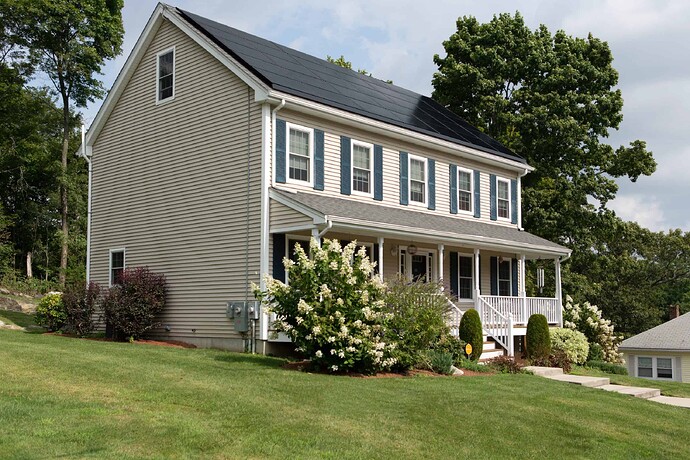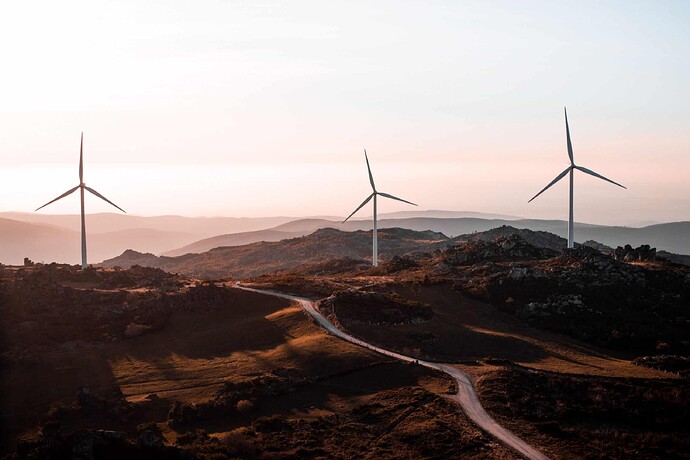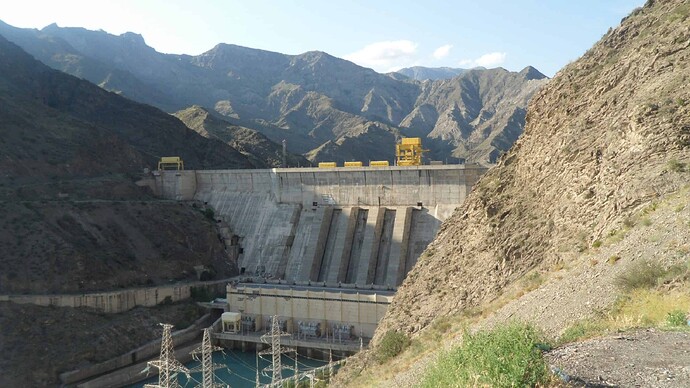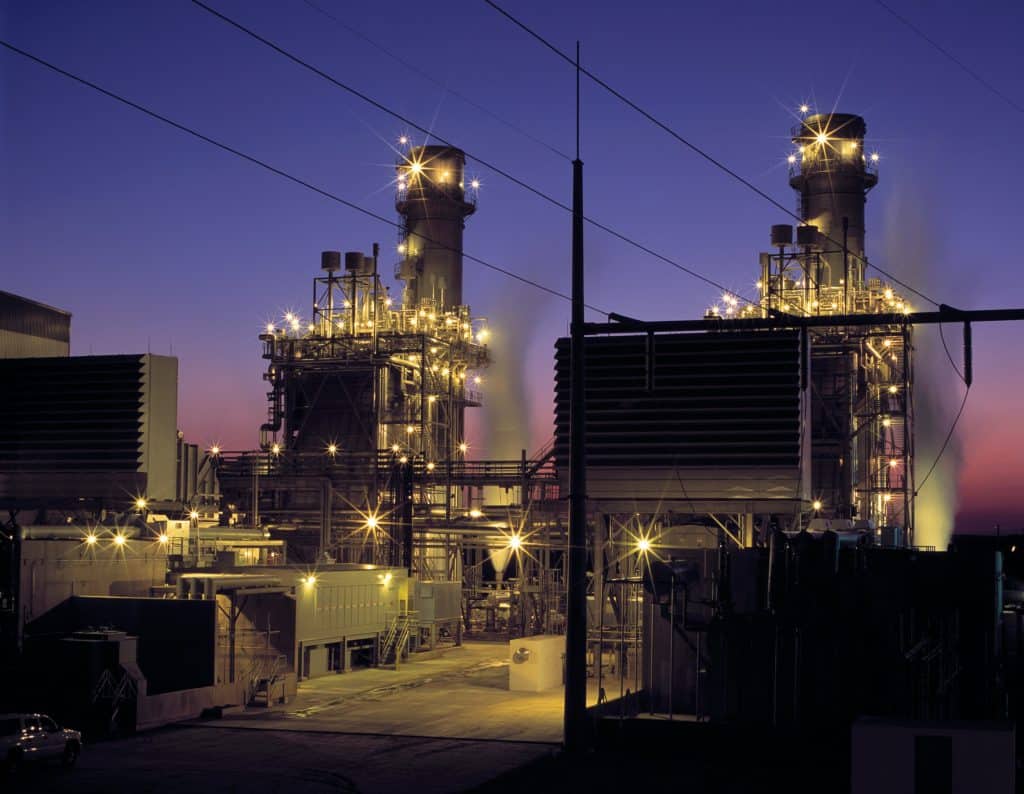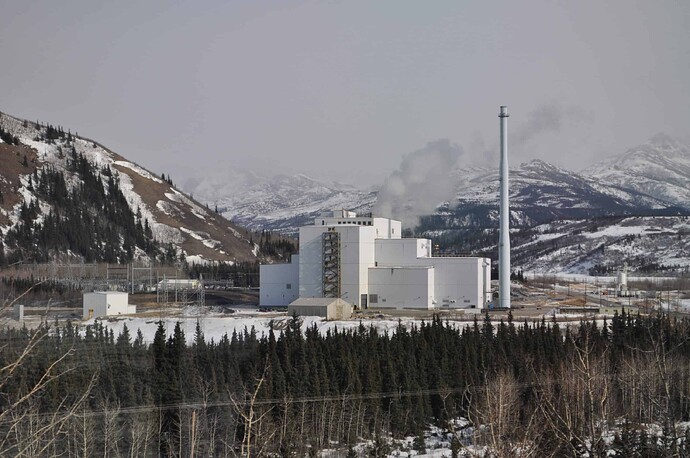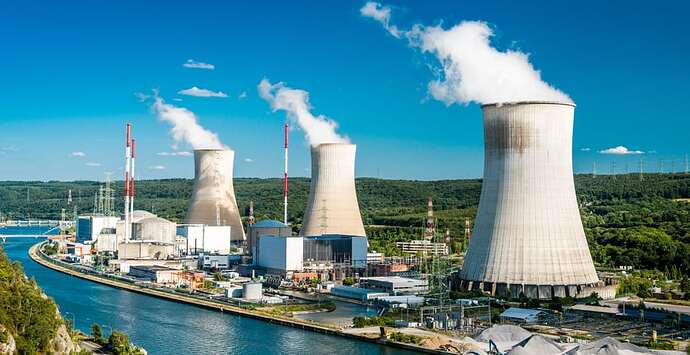After the crisis in Texas, sustainable energy is all over the news.
Over the years, my husband and I have relied on solar power for our lighting and for powering farm equipment on areas of our property where standard power isn’t available.
While I in no way claim to be any kind of professional expert on renewable energy, I have studied it a fair amount over the years. I earned my degree in Environmental Studies with a concentration in Sustainable Forestry in 2005. Renewable energy is more affordable and accessible to the average person than it was back then.
And despite my major, I’ve always tried to look at any aspect of environmentalism from a realistic standpoint. Those championing it can sometimes go too far in their claims, and the topic often becomes mired in emotion rather than facts.
If you’re planning on boosting your energy mix more towards renewables, it’s important to realize that there is no free lunch. Renewable energy is great, but it has its limitations and costs. We cannot ignore those if we want to use renewable resources wisely.
This article will help you weigh the positives and negatives of different renewable energy sources so that you can make the best choice for your home or business. After reading this, you may even decide that several methods combined are best for you.
By making informed renewable energy choices from the beginning, you’ll save a lot of time, money, and frustration.
Since renewable energy options is a big topic to cover in a single article, I’ve included a number of links within where you can gain even more detailed information on the finer points.
And for those looking for specific direction on the most effective ways to conserve and generate power in your own home, I can’t recommend enough Peak Prosperity’s Guide To Home Energy – it is a veritable treasure-trove of practical guidance.
Solar
Pros
- Solar panels are inexpensive. The cost of solar panels dropped dramatically around 2010. My husband and I were working on our house and had just purchased two panels for around $900. Within a few months, the price for the same wattage of panels had dropped to under $450. I recently bought an American-made panel for $1.00 a watt.
- Subsidy programs and tax rebates add additional financial incentives. More people than ever are taking advantage of these incentives.
- You don't have to go 100% solar right away. You can buy a panel and a power center and get started for under $500, and have at least some backup power during a short emergency. You can add more as you can afford it.
- Many people build DIY solar setups and save a ton on installation and setup costs.
Cons
- Only generates power when there is sunlight. If you have a few cloudy days, you may not have enough power to meet your needs unless you have a lot of battery storage.
- Solar panels produce no power at night, so you must have enough battery storage to meet your needs when they're no available sunlight.
Determining If Your Area and Site Is Suitable
- How many hours of high sunlight do you get per day? How much does this number go down in the winter months?
- If you live in a mountainous area, does your property lie down in a dark spot or face North? I live at 3000 feet on a mountain in western North Carolina on land that faces South. Solar works well for us, but there are properties within a few miles that face North or are down in a dark valley where solar doesn't work well despite how sunny our climate is overall.
Resources For More Information
- Planning a Home Solar Electric System
- Backwoods Solar Learning Center
- 9 Steps to Build a DIY Off-Grid Solar PV System
Wind
Pros
- Small turbines are affordable and easy to set up.
- Can generate power at times and in areas where solar is not possible. Solar panels don't produce energy at night. A steady night wind means you're making power. Turbines are great in areas where winds are common and steady, but sunlight hours are limited.
Cons
- Only works where winds are regular and steady
- Wind turbines are aesthetically unpleasing. In some areas, they are illegal to install because people think they will harm tourism or property values.
- Storms can severely damage wind turbines.
- They stop working if too much ice accumulates on blades.
- If there's no wind, you have to rely on whatever power you've already generated and stored in batteries.
- When wind power is used for larger populations, transmission lines must be built and maintained. Large wind turbines are often placed quite far from the people they serve. The further the power has to travel, the greater the energy loss.
- Large wind turbine farms require vast tracts of land. If it's more profitable for a landowner to use the property for other purposes, it's challenging to convince them to invest in wind power.
- Batteries are necessary if you want to store power for use when there's no wind. Battery costs can add up and they have a limited lifespan.
Determining If Your Area and Site Is Suitable
- Do you have reliable and steady winds?
- Are wind turbines legal in your community? If so, are there size limitations or other requirements?
- What's the overall risk of a catastrophic storm? Are you comfortable with the risk of potentially costly repairs or replacement?
- Have you seen evidence that anyone in your area has successfully used wind turbines to generate acceptable amounts of electricity for the amount of money invested? (this is a good sanity-check before purchasing your own wind system)
Resources For More Information
- Installing and Maintaining a Small Wind Electric System
- DIY 1000 Watt Wind Turbine
- Small Wind Guidebook
Hydroelectric
Pros
- Water is reliable in areas that aren't prone to drought.
- Hydro is capable of producing steady power day and night.
- You can estimate what you'll produce accurately, unlike wind or solar, where there is significant variability based on weather patterns.
- Microhydro systems can work effectively for home energy production even in quite small streams.
- Small hydroelectric turbines and water wheels look better than solar panels and windmills.
Cons
- It makes it more difficult for native fish to spawn and replenish their populations.
- Larger installations can be an eyesore in an otherwise pristine area.
- Illegal in some areas. On the Western Coast of the USA, the local utility companies monopolize hydroelectric power generation. You may own your property but not the underlying water rights.
- Damming a waterway can be dangerous and illegal too.
- Requires a steady stream with enough “drop” or waterfall effect to produce power.
Determining If Your Area and Site Is Suitable
- Does your stream have enough “drop” to use a turbine? If not, can you legally make the necessary changes for a reasonable cost?
- Do you own the water rights on your property? Does your local utility company have any special rights that override yours?
- Is your waterway prone to flash floods?
Resources For More Information
The Dirty Truth About Electric Cars
While many are enthusiastic about replacing fossil fuel-burning vehicles with electric ones, the reality is that electric cars are not as environmentally-friendly as we're encouraged to believe.I’m not discouraging folks from driving them. But if we were to magically replace our entire fleet of internal combustion engine cars with all-electric ones overnight, it wouldn’t solve our fossil fuel addiction.
Let’s start with just the raw electricity required to power electric cars. How is that electricity produced?
Here’s the breakdown of the US electricity generation statistics for 2019, the most current data available from the US Energy Information Association:
<img class=“aligncenter wp-image-609014 size-large” src=“https://peakprosperity.com/wp-content/uploads/2021/09/Screen-Shot-2021-02-28-at-9.00.17-AM-1024x652.png” alt="“US electricity generation by source” width=“1024” height=“652” />
Based on these numbers, electric cars are cars primarily running on natural gas, nuclear, and coal for the most part. If most of the electric production in your area comes from nuclear and coal, your car runs on that.
And, of course, the mining and manufacturing of these cars, as well as the building and maintenance of the roads and bridges they run on, is also powered by fossil fuels.
I do believe that there are a lot of people that buy electric cars because they really want to do the right thing. But most don’t realize that while they’re not emitting tailpipe exhaust in their communities, somewhere, a power plant is releasing pollutants in order to create the electricity that powers their cars’ batteries. The pollution is often in someone else’s backyard.
Again, I’m not arguing against electric cars or criticising their owners. I’m just trying to highlight that our society’s fossil fuel addiction is harder to kick than most realize.
Electricity Production in the United States as of 2019
But attempt to kick the habit we must. Each of our country's major energy production sources comes with its own host of damages and dangers:Natural Gas 38%
Natural gas is often produced as a byproduct of the oil pumping process. At the moment, a lot of natural gas is burned off as waste from the process of pumping oil out of the ground. In the past, almost all natural gas was burned off as a byproduct, wasting an immense amount of potential energy and adding carbon into the atmosphere. Though many coal-fired power plants are now being converted to natural gas, which burns a lot cleaner.
Another major problem with natural gas is the immense infrastructure required to get it to where it is needed to generate power. Any pipeline or infrastructure requires doing things to the land, buying rights from landowners, or taking land through eminent domain. The amount of outcry from various groups makes it hard to construct any pipeline that is tied to fossil fuel production.
Also, to safety store natural gas and transport it large distances (e.g. overseas), it is liquified, a highly energy and emissions-intensive process.
Coal 23%
Coal-fired power plants are notorious polluters. I studied them and their emissions for nearly a year in college. All science majors had to come up with a study and experiment for a senior seminar. Results were presented in front of all the science faculty.
Most of the methylmercury from coal combustion falls within a 5 miles radius of the coal-fired power plant. This creates hot spots of mercury contamination. My project was to test the levels of the fish that people were catching out of the cooling lake.
My research got stopped. My faculty mentor made excuses. I think she got a call telling me to knock it off. Who wants some college kid pointing out that the kids in the more well-off neighborhoods and schools might be in a pollution hot zone?
Besides mercury, there are plenty of other nasty ramifications from coal combustion. The ash ponds used to contain waste are a particularly nasty environmental hazard.
Yes, scrubbers on smokestacks have helped plants reduce emissions over the years, but they can only do so much.
Nuclear 20%
Nuclear is often thrown into the “green” category because there are practically no emissions when it’s working as it should. But one of the biggest problems with nuclear is the waste created by spent fuel rods.
These rods are stored on-site at nuclear plants. Constant water circulation is required to keep these rods cool and prevent them from melting down and releasing massive amounts of radiation – such as we’ve seen with the ongoing disaster at Japan’s Fukushima nuclear site.
There was a point when the USA’s plan was to store all its spent rods at Yucca Mountain. That project was nixed, so now we have massive separate storage sites that we’re adding to all the time. If the cooling pumps at these locations stop running for any reason, disaster is only 1-5 days away, depending on when the last fuel rods were put in the pools (when they first go in, they’re much hotter than after they sit in the pools for a while). At the moment, the plan is to keep storing spent radioactive rods this way indefinitely.
Maintenance and safe upkeep is a growing burden, too. Many of our nuclear plants were only designed to operate for 30-50 years before being replaced or upgraded. That has not occurred. Lax policies like this are bound to lead to trouble down the road.
Lessons Learned From Off-Grid Living
Propane Appliances
Those that go off-grid often rely on propane to run appliances that use a lot of energy. Propane clothes dryers and refrigerators are very common. Of course, this means you have to haul propane in or have it delivered, making you more dependent on fossil fuel.Some small freezers are possible to run off of stored energy from renewable sources. The small chest freezer we recently bought only burns 1.2 amps at 110 volts. Over the years, some smaller appliances have become a lot more energy-efficient.
Swamp Coolers and More Fans
Air conditioners are out if you are going wholly off-grid and want to use solar or similar for all your power needs. Consider how much power is burned just keeping homes in the USA cool, even when people are not occupying them for large parts of the day? On our homestead, we use some window unit air conditioners rarely. Some summers, we don't use them at all. My husband and I have found that it is easier to get acclimatized to working outside in the heat at the beginning of the summer if we just let our bodies adapt to the natural changes instead of creating an artificial environment.Wood or Propane For Heat
Wood burning stoves are perhaps the common primary source of heat for those off-grid. You can get wood-burning furnaces that are set outside or underneath your home if you prefer to use ducts in conjunction with wood heat.Propane furnaces or small propane-powered wall units are also very common. Of course, this makes your family more dependent on outside fuel sources. If you have acreage, like we do, that includes wooded areas, you may manage it so that your land provides all of your firewood for the year.
Alternative Hot Water Heater Systems
If you plan on going off-grid, you need to plan out how you will get hot water. There are many ways to approach this depending on how much you need and your climate. Propane tankless on-demand hot water heaters are one of the easier solutions if you have access to propane. Solar collectors are another option. Here is a link to an excellent article that shows 5 useful methods for getting the hot water you need off-grid."Too Much Magic"
Plenty of Peak Prosperity readers are familiar with the work of my friend Jim Kunstler. "The Long Emergency" is his bestselling book on peak oil. I remember reading it when in my 20s. A year or so ago, I wrote Jim, and we started corresponding while I was reading some of his other books. "Too Much Magic: Wishful Thinking,Technology, and the Fate of the Nation" is a book I recommend everyone read because it shows how as a society, we tend to think that technology and science can find a way for us to maintain lifestyles that require massive amounts of energy. This mentality is how we get conferences that talk about flying cars as the future of transportation instead of improving electric and gasoline-powered vehicles.The truth is that renewable energy cannot sustain the planet’s burgeoning population at the energy consumption level we are all used to. There have to be cuts if we are not going to use fossil fuels. Getting people to change their lifestyle is very difficult. Things have a way of going on until they cannot any longer.
Reliance on Foreign Manufacturing & Imported Materials
In his books, Jim points out that a lot of equipment required for renewable energy, such as solar panels and wind turbines, relies on mining rare earth minerals.Many of the rare earth minerals used in solar panels come from foreign countries. Recently China has stated that it may restrict the export of rare earth minerals to the United States. They have made similar threats and statements in the past. The fact that a foreign country knows they can use our dependence on rare earth minerals against us, is concerning.
After China announced that they may restrict exports of rare earth minerals, the response of the Biden administration was to start reviewing vital resource supply chains due to the continued threat of shortages of supplies needed for daily life and essential manufacturing. So far, no results or future plans have been announced for ensuring strong supply chains.
While I applaud the pursuit to be more sustainable, the fact remains that if everyone switches over to renewable energy, more raw materials for manufacturing solar panels, turbines, etc, will be required. Supplies of key inputs like rare earth minerals will only become more stressed. The rule of supply and demand will come into play, and the cost of renewable energy will rise due to increased manufacturing and importation costs.
Conclusion
At an individual level, renewable energy is an excellent way to be less dependent on an aging and unreliable US electrical grid. It can also protect you from increased energy costs as power companies raise their rates. The key is to find the methods that work best in your area so that you can make the wisest investment of time and money for the amount of power your produce.Once you have, then read Peak Prosperity Guide To Home Energy for specific ideas on how to minimize your home’s energy footprint through conservation, as well as which renewable energy systems may be best for you.
Also, there’s an excellent 'Ask The Expert’s Q&A session coming up this Wednesday at 5pmET with home energy specialist Bruce Sullivan from the Zero Energy Project. He’ll address any and all questions about home energy conservation and production.
At the national level, it’s unrealistic to expect that renewable energy will replace fossil fuels to meet US energy needs unless there is a dramatic downshift in the country’s lifestyle as a whole. Substantial investments in equipment and infrastructure must also be made.
Until that starts happening on a series scale (which it isn’t), we all better use the time we have available now to invest in our own home energy resilience.
This is a companion discussion topic for the original entry at https://peakprosperity.com/the-pros-cons-of-renewable-energy/
